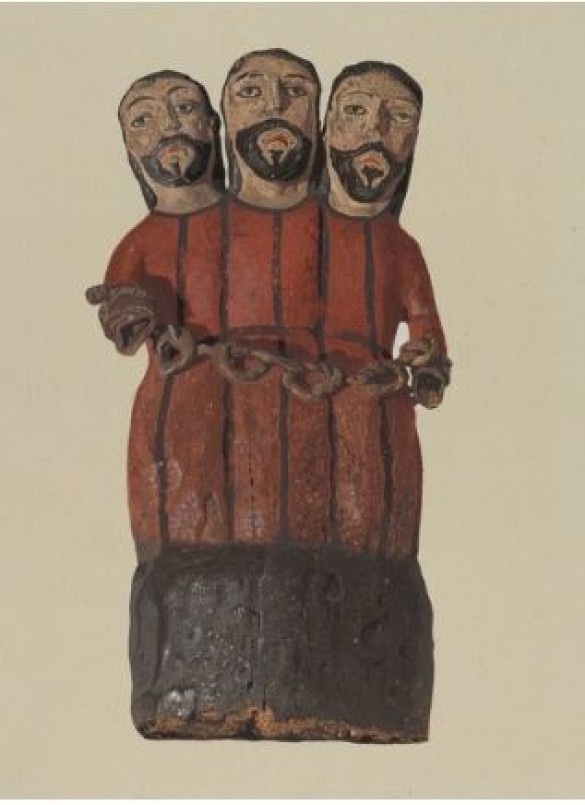
Spain's rich and diverse cultural heritage is beautifully reflected in its folk art, a tapestry of artistic expressions that have been passed down through generations. Rooted in the country's historical and geographical diversity, Spanish folk art weaves together a fascinating blend of influences, customs, and techniques that vary from region to region. This essay explores the enchanting world of Spain's folk art, shedding light on its origins, styles, significance, and evolution over time.
Spanish folk art is deeply rooted in the country's history, dating back centuries to the pre-Roman and medieval eras. It is a melting pot of cultural influences, thanks to the diverse civilizations that have occupied the Iberian Peninsula throughout history. Phoenicians, Romans, Visigoths, Moors, and Christians have all left their indelible mark on Spanish folk art.
Also Read: The Colorful Evolution of Indian Arts and Crafts: Yesterday, Today, and Tomorrow
The Moors, who ruled Spain for several centuries, significantly influenced the development of various art forms. Intricate tile work, known as "azulejos," and colorful geometric patterns are some of the enduring legacies of Islamic art that persist in modern Spanish folk art.
Spain's folk art encompasses an array of styles, each associated with specific regions. Some prominent examples include:
Andalusian Ceramics: Andalusia boasts a long tradition of ceramic production, with Seville and Granada being the epicenters of this craft. Vibrant tiles and pottery, adorned with floral motifs and intricate designs, adorn buildings, streets, and homes across the region.
Also Read: Crafting Stories: The Art of Indian Handicrafts and Textiles
Castilian Embroidery: Castile, the historical heartland of Spain, is known for its exquisite embroidery work. Skilled artisans create beautiful patterns and scenes using vibrant threads, often depicting religious or historical themes.
Basque Woodcarving: The Basque Country is renowned for its masterful woodcarving traditions. Artisans skillfully carve intricate designs into wood, creating decorative objects, furniture, and religious figures.
Catalan Paper Crafts: Catalonia boasts a strong tradition of paper crafts, including papier-mâché sculptures and intricately designed cutouts known as "colles." These crafts are often used during festive events and celebrations.
Galician Leatherwork: In the northwestern region of Galicia, leatherwork is highly esteemed. Artisans craft leather items such as bags, belts, and shoes, adorned with beautiful embossed designs.
Valencian Ceramics: Valencia is famous for its colorful ceramic pottery, which often features detailed scenes from everyday life and historical events.
Also Read: Exploring the Rich Cultural Heritage of Indian Folk Dances
Spanish folk art is more than just decorative; it carries profound cultural and symbolic significance. Many of the designs and motifs are deeply rooted in Spain's religious beliefs, folklore, and historical events. For example:
Catholic Iconography: Spain's deep-rooted Catholic heritage is evident in many folk art pieces. Religious figures, such as the Virgin Mary and various saints, are commonly depicted in paintings, sculptures, and embroidery.
Nature and Agriculture: Spain's agrarian roots are often reflected in folk art, with motifs of plants, animals, and rural landscapes symbolizing fertility, abundance, and the connection to nature.
Also Read: Exploring the Vibrant Tapestry of Indian Folk Dances: A Journey through Major
Symbolic Colors: Colors hold specific meanings in Spanish folk art. For instance, red symbolizes passion and love, while blue represents spirituality and divinity.
Spain's folk art is a testament to the country's captivating history, diverse cultural influences, and the resilience of traditional craftsmanship. Its vibrant colors, intricate designs, and profound symbolism continue to captivate art lovers and tourists alike. By embracing the legacy of their ancestors and adapting to the changing times, Spanish artisans ensure that this enchanting folk art remains a cherished aspect of the nation's cultural identity for generations to come.
Also Read: World on a Plate: Exploring Diverse Culinary Delights Across Country